How to queue to see Queen Elizabeth II lying-in-state, where to get wristbands, use the toilet and find water?
and live on Freeview channel 276
Mourners wishing to view Queen Elizabeth’s coffin lying-in-state have been warned to prepare for “very long queues”.
The government has revealed guidance on how people can attend Her Majesty’s lying-in-state at Westminster Hall, at the Houses of Parliament in central London.
Advertisement
Hide AdAdvertisement
Hide AdThe BBC’s red button service will provide a live feed from Westminster Hall and ITV and Sky will be running extensive coverage, while an online book of condolence is available for people to add personal messages - as well as NationalWorld’s own online condolences book.
And the BFI will have an outdoor screen showing archive footage of the Queen and her reign while people queue.
What does lying-in-state mean?
Lying-in-state is a tradition in which a deceased public figure - usually a monarch, consort or occasionally a former prime minister - has their body or coffin displayed in a state building.
Advertisement
Hide AdAdvertisement
Hide AdThis is to allow members of the public to file past the body to pay their last respects.
In the UK, lying-in-state takes place in Westminster Hall, in the City of Westminster.
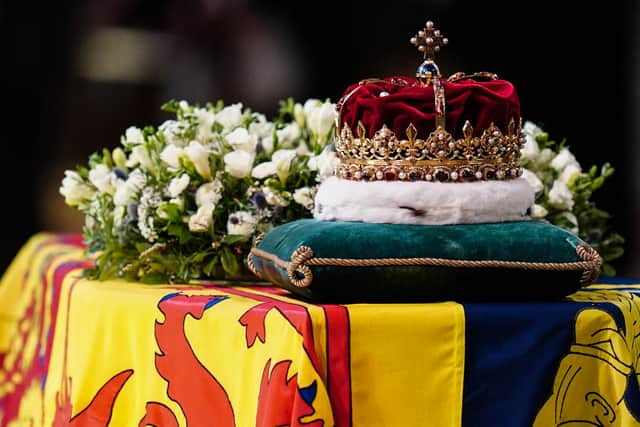

Figures who have lain-in-state include William Gladstone, King Edward VII, King George VI, Queen Mary, Sir Winston Churchill, and Queen Elizabeth the Queen Mother.
The Queen’s closed coffin will be placed on a catafalque - or raised platform - draped in the Royal Standard flag with the orb and sceptre placed on top, and guarded regiments including the Sovereign’s Bodyguard, the Household Cavalry, the Grenadier Guards and the Scots, Irish and Welsh Guards.
Advertisement
Hide AdAdvertisement
Hide AdEach soldier will stand in post, with heads bowed and weapons inverted, for twenty minutes.
Where will she lie-in-state?
Queen Elizabeth’s lying-in-state will take place in the middle of Westminster Hall.
The location is the oldest existing part of the Palace of Westminster, in central London, home to the UK’s two Houses of Parliament - the House of Lords and the House of Commons.
It was built in 1097 by King William II and at that time was the largest hall in Europe.
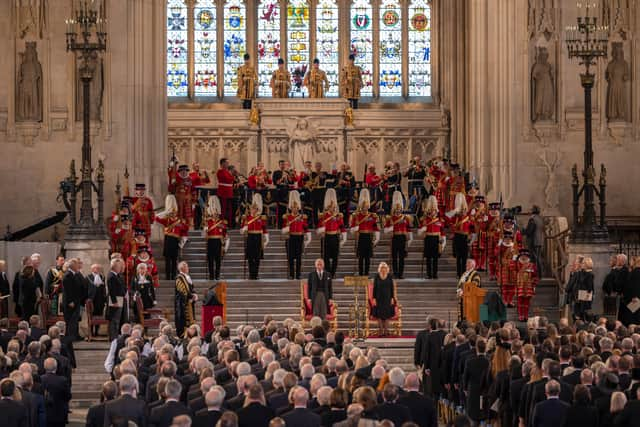

Advertisement
Hide AdAdvertisement
Hide AdThroughout history, the hall has been used for law courts and trials - including of King Charles I and Guy Fawkes, and ceremonial events such as coronation banquets.
It also houses war memorials to Parliamentarians killed in the First and Second World Wars.
A new stained glass window for the Queen’s Diamond Jubilee was installed in 2012.
When will the Queen be there?
The Queen died at Balmoral Castle in Scotland, and according to the official plans for her Majesty’s death, she must first lie-in-state in Edinburgh at the Palace of Holyroodhouse.
Advertisement
Hide AdAdvertisement
Hide AdHer coffin is travelling to London from Scotland by plane today (Tuesday, September 13) and will arrive at just after 7pm at Buckingham Palace to meet King Charles and Camilla.
On Wednesday, September 14, the coffin will travel to Westminster Hall just after 2pm.
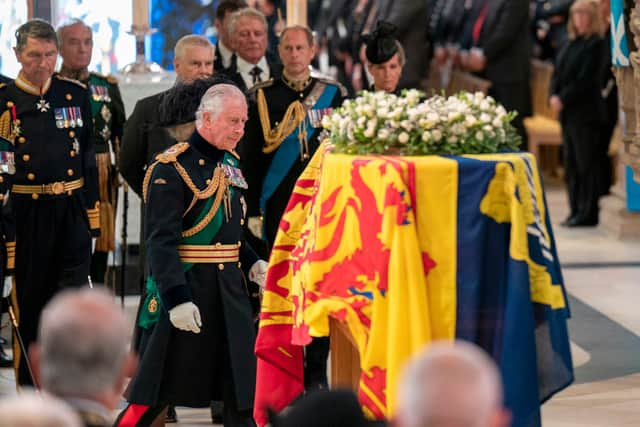

A procession from Buckingham Palace to Westminster will take place with crowds lining the streets as the cortege passes via the Mall, Horse Guards, Whitehall and Parliament Street.
There will be a short service at Westminster Hall before it opens to the public.
Advertisement
Hide AdAdvertisement
Hide AdThe Queen will then lie in state for four full days, from 5pm on Wednesday, until 6.30am on Monday, September 19 - the day of the state funeral - with the hall open 24-hours a day.
How to queue?
Mourners have been warned by the government to expect “very long queues”.
Guidance states: “You will need to stand for many hours, possibly overnight, with very little opportunity to sit down as the queue will be continuously moving.
“Large crowds are expected, and there are likely to be delays on public transport and road closures around the area. Check ahead, plan accordingly and be prepared for long queues.”
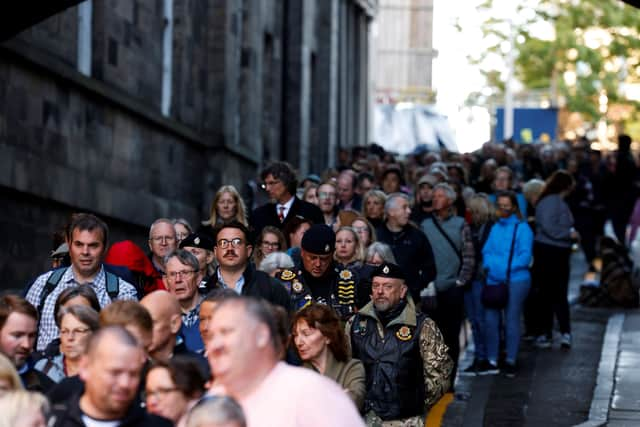

Advertisement
Hide AdAdvertisement
Hide AdPeople are advised to carefully consider whether to attend or bring children with them.
The queue is set to cross Lambeth Bridge and follow the south bank of the River Thames, and further details of the queue route have now been released.
Mourners will begin queuing on the Albert Embankment and continue to Southwark Park.
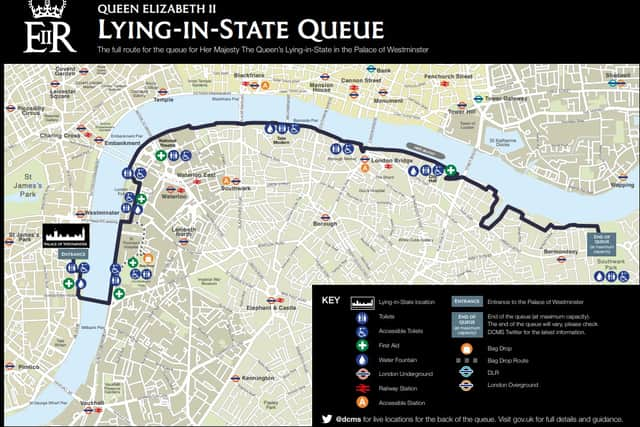

It will run along Belvedere Road behind the London Eye, and head onto the South Bank where it will follow the River Thames past the National Theatre, Tate Modern and HMS Belfast through to Southwark Park.
Advertisement
Hide AdAdvertisement
Hide AdOnce people have passed through Albert Embankment they will be directed across Lambeth Bridge, into Victoria Tower Gardens and through airport-style security before entering the Palace of Westminster.
People wanting to join the queue are asked to check the current location of the end of the line via DCMS social media channels, or to ask stewards along the published queue route, and to plan their journey via the Transport for London (TfL) app.
How will the wristband system work?
When you reach the back of the queue, you will be given a coloured and numbered wristband.
This is a record of when you joined the queue, however it does not guarantee your entry to the lying-in-state.
Advertisement
Hide AdAdvertisement
Hide AdThe aim is to make sure as many people as possible can pay their respects and regular updates will be provided on queue length and estimated wait times.
Any decision to close the queue will be communicated widely via government social media channels.
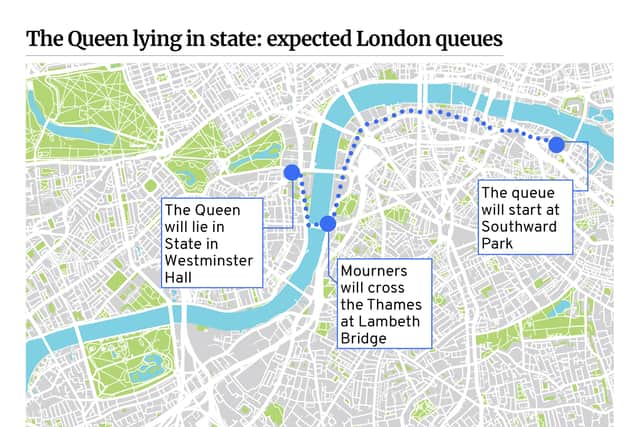

Wristbands are specific to each person joining the queue, and are strictly non-transferable.
You must keep this wristband on at all times as it will be checked along the route.
Advertisement
Hide AdAdvertisement
Hide AdYour wristband also allows you to leave the queue for a short period to use a toilet or get refreshments, then return to your place in the queue.
Public toilets, drinking water and first aid stations are available at designated locations along the queue route.
Step-free and accessible options will be available for those who need them.
What should you bring with you?
Security procedures to enter the Palace will be similar to going through an airport.
Advertisement
Hide AdAdvertisement
Hide AdMourners are allowed to bring one small bag per person into Westminster Hall which must be less than 40cm x 30cm x 20cm, with one simple opening or zip.
Larger bags must be left at the bag drop, but capacity is limited and space is not guaranteed.
The Department for Culture, Media and Sport (DCMS) says: “Items are left at your own risk. Waiting for bag storage space to become available will increase your queuing time.”
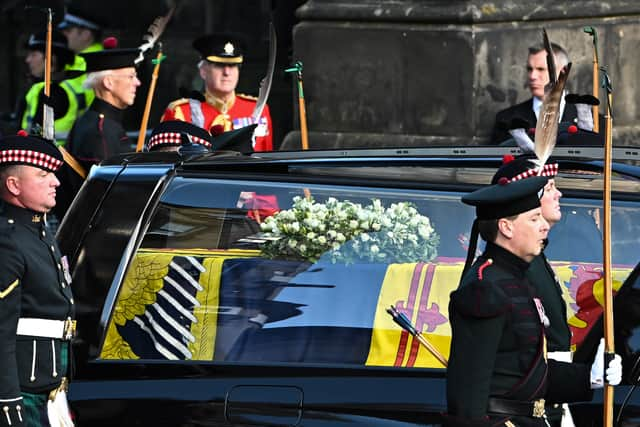

People should wear and bring weather appropriate clothing - such as warm clothes, raincoats, umbrellas and sun cream - and food and drinks to consume while queuing.
Advertisement
Hide AdAdvertisement
Hide AdBringing portable power banks and mobile phone chargers is also advised.
If you need essential medication or equipment you should bring this with you and make security staff and/or police aware before being searched.
Where can I go to the toilet?
The DCMS has now issued updated guidance on toilet facilities and welfare points.
These will include toilets and water fountains at various locations along the route.
Advertisement
Hide AdAdvertisement
Hide AdLocal organisations including the Southbank Centre, the National Theatre, the BFI Southbank, the Tate Modern and Shakespeare’s Globe will be opening their doors for extended hours to provide refreshments and comfort breaks to queuers around the clock.
It’s expected that Portaloos will be provided, as well as access to existing facilities in local businesses.
However, given the size of the crowds, people may need to be prepared for long queues.
What support will be available?
More than 1,000 dedicated volunteers, stewards and Met Police officers will be on hand to assist members of the public wanting to pay their respects and keep them safe.
Advertisement
Hide AdAdvertisement
Hide AdVolunteers from the Scouts, Samaritans, The British Red Cross, First Aid Nursing Yeomanry and The Salvation Army along with faith representatives will support those in the queue.
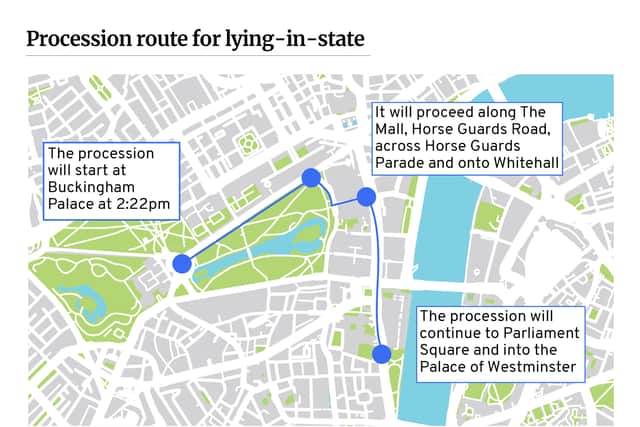

St John Ambulance will be stationed along the route to provide first aid if required.
And more than a hundred Scouts aged between 18 and 25 from across the UK will join volunteers from Samaritans to offer help where it is needed.
Where can I buy food and drink?
People are advised to bring food and drink with them to consume in the queue.
Advertisement
Hide AdAdvertisement
Hide AdThere are limited places to buy refreshments along the route.
However, cafes and other local businesses are also expected to open for extended periods alongside welfare centres to provide refreshments for those in the queue.
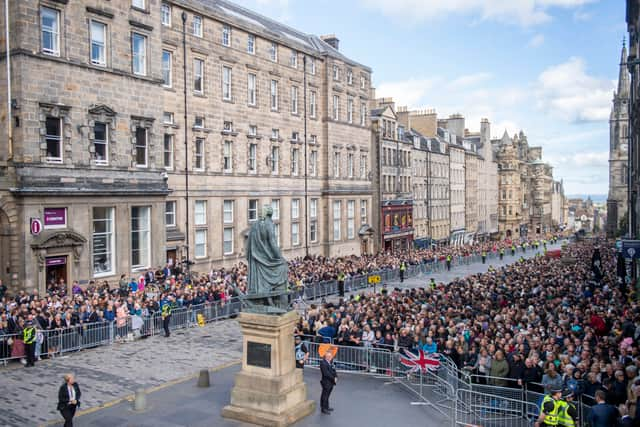

Any food and liquids must be consumed or disposed of before the security search point.
Clear water bottles are permitted, but must be emptied of their contents before you enter the security search point.
Where can I sleep?
Advertisement
Hide AdAdvertisement
Hide AdThere is not currently any official information on anywhere you can sleep while in the queue.
But mourners have been warned: “You will need to stand for many hours, possibly overnight, with very little opportunity to sit down as the queue will be continuously moving.
People have also been told not to bring coolers, hampers, sleeping bags, blankets, folding chairs and camping equipment.
Where can I charge my phone?
People have been advised to bring portable power banks and mobile phone chargers with them.
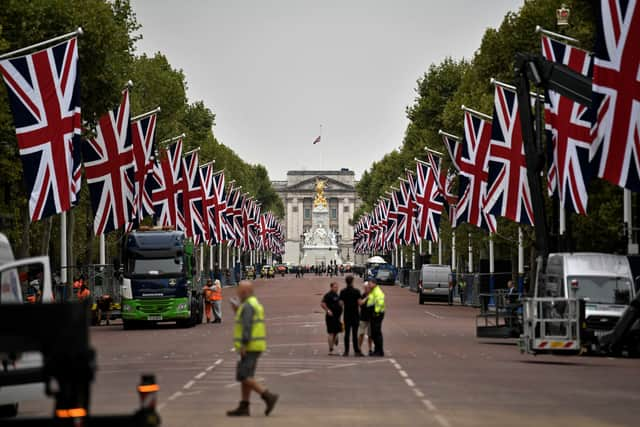

Advertisement
Hide AdAdvertisement
Hide AdMore details on power points to charge devices may be issued later.
Will I be searched?
Strict security measures are in place at the lying-in-state and police may conduct searches while people are queuing.
Before entering the Palace of Westminster, you will go through an airport-style security search point.
The DCMS says: “Restrictions on bags and other items will be strictly enforced.
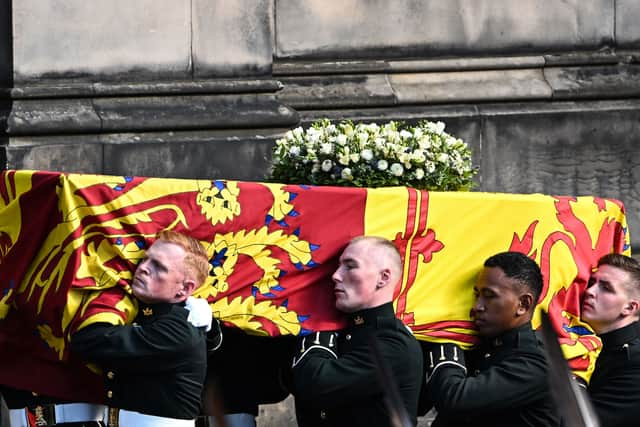

Advertisement
Hide AdAdvertisement
Hide Ad“Prohibited items, including drinks and other liquids, will be confiscated at the search point and disposed of.
“If there is a security incident or you spot a suspicious item, alert the stewards or the police and follow their instructions.”
Prohibited items will be confiscated and not returned and police will deal with illegal items.
Will there be disabled access?
Step-free access will be available for those who need it and more information on this has now been made public.
Advertisement
Hide AdAdvertisement
Hide AdThe main queue has step free access and there is a separate accessible route, for those who need it.
The accessible route will begin at Tate Britain where timed entry slots will be issued for a queue heading along Millbank to the Palace of Westminster.
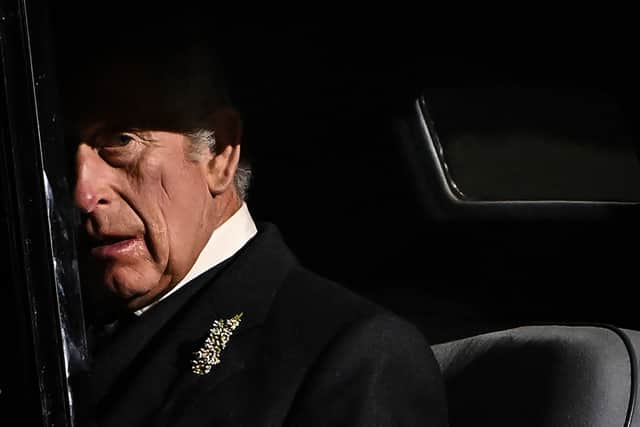

Guide dogs, hearing dogs and other official assistance dogs will be permitted in Westminster Hall - but no other animals are allowed.
British Sign Language interpreters will also be available to people joining the queue.
Advertisement
Hide AdAdvertisement
Hide AdThe security search point and the Palace of Westminster have step-free access.
Do I have to behave a certain way?
People are asked to “respect the dignity of this event and behave appropriately” while mourners must “remain silent while inside the Palace of Westminster”, the DCMS says.
Clothing should be occasion appropriate and not bear any political or offensive slogans.
Keep noise to a minimum, and respect people who live in residential areas near the queue.
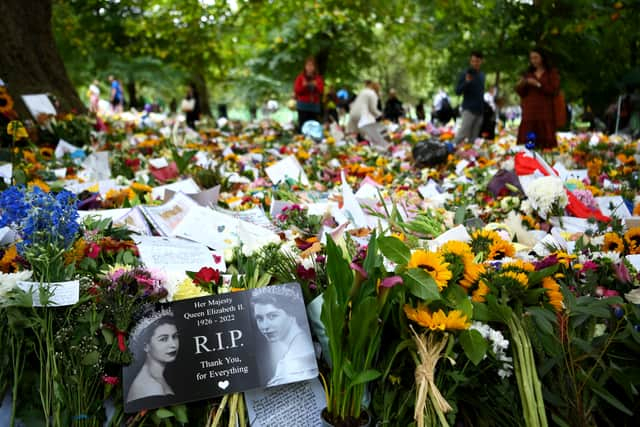

Advertisement
Hide AdAdvertisement
Hide AdPhones should be turned off or on silent before entering the security search zone, and litter disposed of in bins provided.
Stewards and police officers will patrol the queue and people should follow their instructions.
Guidance states: “Antisocial or inappropriate behaviour (including queue-jumping, excessive consumption of alcohol or drunken behaviour) will not be tolerated and you will be removed from the queue.”
What am I not allowed to do?
While queuing or filing past the coffin, you may not:
- Film, photograph, or use mobile phones or other handheld devices in the security search area and the Palace of Westminster;
- Bring or erect gazebos or tents;
- Light barbecues or fires;
- Attempt to queue on behalf of others or ask others to queue on your behalf;
- Leave bags or items unattended as they will be removed and may be destroyed.
What should I do when I leave?
As you leave the Palace of Westminster, you should move away from the exit straight away, as this will help everyone to keep the queue moving.
Advertisement
Hide AdAdvertisement
Hide AdYou will then be asked to remove your wristband when you exit.
If you have left a bag or other item at the bag drop facility, you must collect your item straight after your visit.
When you leave the Palace of Westminster, follow the signs and directions given by stewards to return to the bag drop facility and collect your bag or item.
